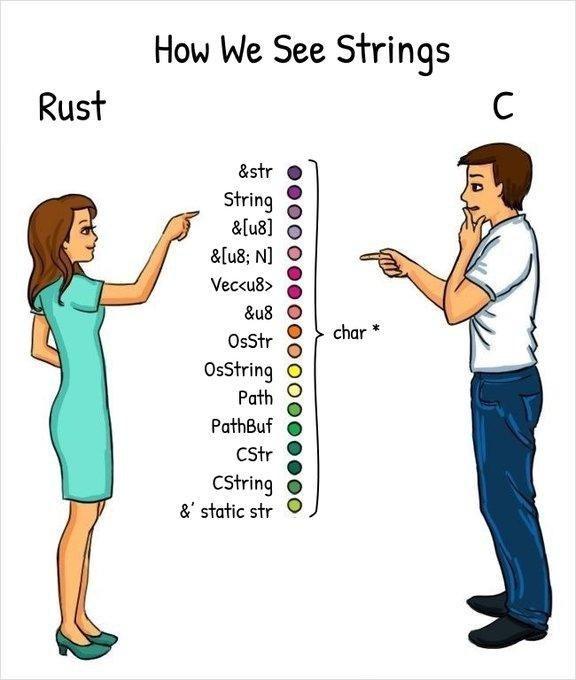this post was submitted on 08 Jan 2022
1 points (100.0% liked)
Programmer Humor
32373 readers
556 users here now
Post funny things about programming here! (Or just rant about your favourite programming language.)
Rules:
- Posts must be relevant to programming, programmers, or computer science.
- No NSFW content.
- Jokes must be in good taste. No hate speech, bigotry, etc.
founded 5 years ago
MODERATORS
you are viewing a single comment's thread
view the rest of the comments
view the rest of the comments

The primary reason there are so many ways is the Rust ownership and type system.
Stringis a 'normal' mutable UTF-8 string that is allocated on the heap.&stris either a slice reference pointing to a part of a string or a string literal in read-only memory.&[u8]is a reference to slice of bytes (so only capable of ASCII characters).&[u8; N]is a reference to a fixed size slice reference of bytes where the length is encoded in the type.Vec<u8>is a mutable array of bytes (the former two are immutable in contrast).&u8is a reference to a single byte.OsStringis an owned, mutable platform native string in the platform's preferred representation (e.g. non-zero byte UTF-8 on Linux, non-zero byte UTF-16 in Windows).OsStris a borrowed version of anOsString.Pathis a slice that supports operations like obtaining the root element or file name or check if it is absolute or relative or to check if the the file exists in the file system.PathBufis an owned, mutable version of the former one.CStringis an owned representation of a string that should be compatible with C (e.g. null terminated and no zero bytes in between). They are handy if you want to call C libraries from Rust code.CStris a borrowed version ofCString.&'static stris a string slice reference with a static lifetime and is therefore valid for the duration of the entire program (in contrast to slices ofStrings that might get de-allocated at some point).